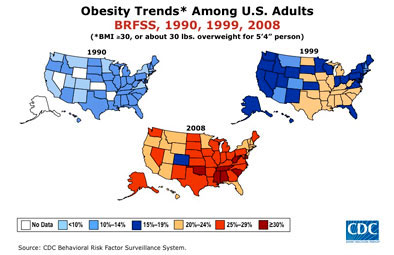Obesity is an American crisis. It’s official. We know this, not because of any proclamations from the arbiters of such titles, but because of the attention the issue is receiving from the most influential sectors in the country.
We are, as a nation, unequivocally, in crisis. And a crisis requires a change.

But what will drive the systemic change required to reverse thirty years of rising obesity rates?
Our most influential sectors have an enormous capacity to create widespread awareness and share ideas, but their abilities to drive change, especially for a problem rooted at the individual level, is limited.
Those sectors of lesser national influence, however - families, neighbors, friends, co-workers, communities – are fantastic at driving change on an individual level.
In fact, we believe the solution to the obesity crisis will not be revealed as a silver bullet, but as the sum of millions of acts of compassion; people caring enough about the folks around them and/or themselves to seek a change.
But, of course, compassion can only do so much. People need resources to change. They need direction.
IHRSA’s Get Active America! program is designed to provide that direction at the community level.
The annual, week long program is a health initiative that enables IHRSA health clubs to increase their roles in improving the health of their neighborhoods. The goal is to educate community members to take control of their health by integrating regular exercise into their lives. Each year, the program attracts tens of thousands of individuals to hundreds of health clubs nationwide, many for the first time.
The program is simple. Each participating health club agrees to allow members to “bring a friend” of their choosing – a child, spouse, parent, grandparent, friend, co-worker or neighbor – from May 3-6th. In addition, each club must hold an “open house” for the community from May 7-9th.
This year’s theme is “Take Back Your Health,” which is supported by three program tracks: Feel Better, Look Better, and Live Better.
The Feel Better track includes offerings such as nutrition counseling, stress management seminars, and specific disease programming (such as diabetes or arthritis).
The Look Better track highlights activities like core-training classes, weight-loss counseling, and toning exercises.
The Live Better track stresses events including family physical activities, free screenings, and exercise-related seminars from local medical professionals.
We know that it will take more than just Get Active America! to solve the obesity crisis, but we are confident, or, at least, as hopeful as possible, that the program’s emphasis on local community outreach, and its reliance on the compelling power of compassionate camaraderie (i.e. “Bring a Friend”), will prove to be key underpinnings of the nation’s successful effort to combat obesity.
We know there are hundreds of other wonderful community programs around the nation. We’d love to know - what is your organization doing?





